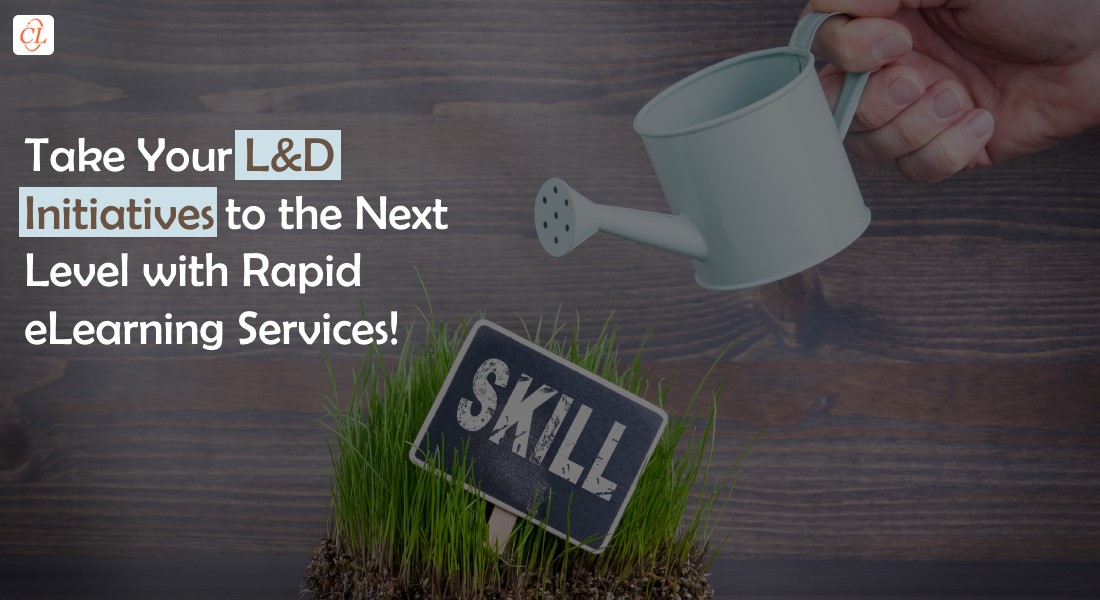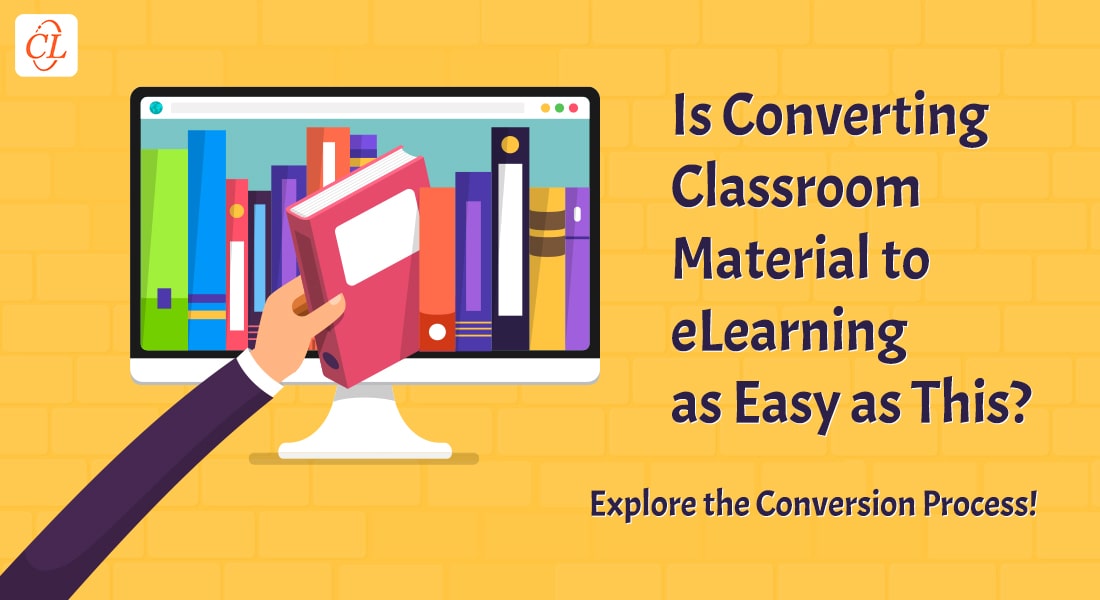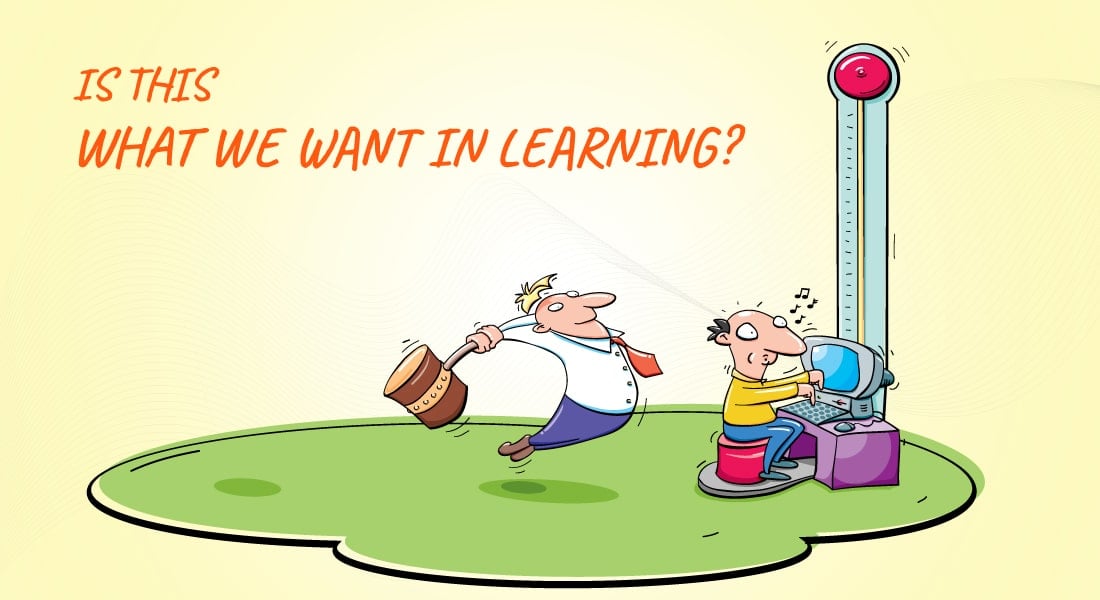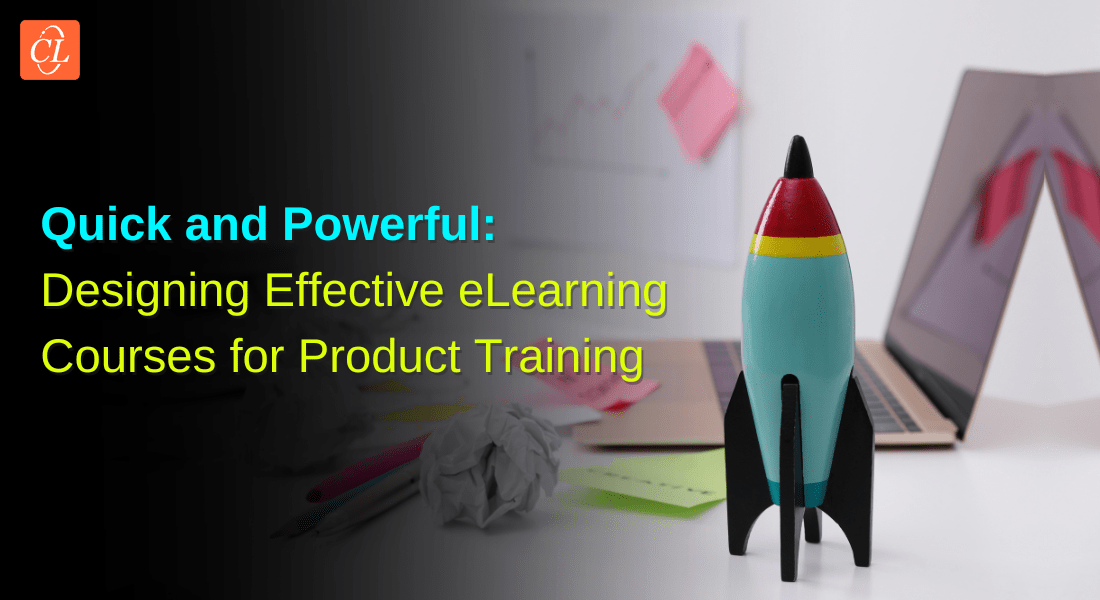An Essential Guide to Rapid eLearning Services

Are you worried that you won’t have enough time (or money) to… improve your employees’ performance, convert your classroom training materials to eLearning, make your Flash or legacy courses multi-device compatible, or translate your courses into different languages to cater to your global workforce? If that’s the case, then you might need to implement rapid eLearning course development.
Regardless of your goals or size, rapid eLearning solutions allow you to provide high-quality training in the shortest possible time. When you’re in a hurry and need your staff to climb the learning curve as fast as possible, there is no better option than rapid eLearning course development.
What are The Different Services Offered in Rapid eLearning?
The Different Services Offered in Rapid eLearning are:
- Classroom to eLearning Conversion
- Legacy Course Conversion
- eLearning Translations
With rapid eLearning realistic business outcomes are delivered in a timely manner. Training is critical to the success of businesses around the world. Rapid eLearning is a quicker yet equally effective avatar of custom eLearning that reduces the time and expense of eLearning course development. Rapid eLearning saves the Subject Matter experts (SMEs) time by reducing the number of SME discussions in the process of eLearning course development.
Considering the significance of rapid eLearning, let’s take a closer look at the different types of services it has to offer:
- Classroom to eLearning Course Conversion
- Legacy Course Conversion
- eLearning Translations
Here’s a Training Manager’s Handbook to Rapid eLearning Development.
1. Classroom to eLearning Course Conversion
During the pandemic, many firms, whether large or small, have been looking to make the change from their instructor-led training (ILT) courses to eLearning courses. Converting classroom material into an eLearning course is a substantial move that requires careful preparation. Whether you choose to make the change with the assistance of your in-house L & D team or outsource the entire process to an external vendor, you must be aware of the many phases involved in classroom to eLearning course conversion.
Authoring tools such as Lectora, Captivate, and iSpring make it possible to produce eLearning courses within tight deadlines. They make it easy to produce training courses by swiftly scaling up course development when needed. However, it must be noted that classroom content cannot be converted into an eLearning course by simply loading it into an authoring tool and somehow magically receiving an eLearning course at the other end.
Rapid eLearning course development is a process that requires:
- Good instructional design
- The ability to transform classroom instruction into eLearning
- Knowledge of rapid eLearning course development and authoring tools
Here’s a 4-point strategy to help you grasp the process.
- Revisit learning objectives
- Analyze content and fill any gaps
- Create an effective instructional design plan
- Frame assessments
Revisit Learning Objectives
The learning objectives of rapid eLearning courses must be performance-based, unambiguous, and quantifiable, as well as related to the company’s business goals. In light of the virtual learning environment and the learners’ needs, it is critical to reassess and redefine learning objectives. A clear understanding of your target audience can help you zero in on effective and significant learning objectives.
Analyze Content and Fill any Gaps
The content of rapid eLearning courses is typically available in a variety of formats such as PowerPoint presentations, PDFs, manuals, facilitator guides, and white papers, and the process of collecting and analyzing them takes a lot of time. Furthermore, training materials may contain out-of-date and unnecessary information. It is vital for the instructional designer to review all available information to determine what is relevant to the rapid eLearning course.
How do you sift through all the available material to find what is important and what is not? It’s simple! You retain all the information that pertains to your learning objectives and take out everything else. Then you need to look through the filtered content to ensure that it is comprehensive and accurate. If there are any gaps in information or any obsolete material, seek the expertise of a Subject Matter Expert (SME).
Create an Effective Instructional Design Plan
An instructional design strategy is a top-level plan to teach a target audience. The right instructional techniques engage and inspire learners while also compensating for the lack of an instructor. It is critical to choose an appropriate instructional design strategy.
Popular Instructional Design Techniques include:
- Guided Learning: Characters/avatars that are used to support learners throughout the course
- Scenario-based learning that ensures learners’ complete tasks and make decisions by presenting them with real-life situations
- LEAD (Learning Through Exploration and Discovery) that affords learners the opportunity to virtually learn, explore and interact
- Storytelling: Immersive learning through storytelling that improves recall and retention of knowledge gained
- Simulations that imitate real-life environments, allowing learners to pursue, learn, and practice on a risk-free platform
- Gamification that makes learning more enjoyable and motivates learners to finish the course
Frame Assessments
In the classroom, the trainer assesses the learners’ knowledge by using Q&A sessions and written evaluations. In an eLearning course, this can be done with the help of formative and summative assessments.
Formative Assessments:
After fulfilling each learning objective, formative assessments are given to encourage learning. They are often followed by constructive feedback. Learners can be assessed using quizzes, surveys, multiple-choice questions, fill in the blanks, drag and drop, match the following, and other interactivities. Formative assessments are not graded.
Summative Assessments:
Summative assessments are used at the end of a course to determine how well learners grasp what they have been taught. This type of evaluation assesses whether the learner has met the learning objectives. Summative assessments include single-select, multiple-choice, and graded questions that provide the opportunity for the seamless and continuous monitoring of the learning process.
2. Legacy & Flash Course Conversion
Any training material generated using outdated authoring tools are considered legacy courses. Some examples of legacy courses are Adobe Flash-based online learning courses or courses designed using older versions of today’s most popular authoring tools, such as Articulate Storyline, Lectora Inspire, or Adobe Captivate.
Converting legacy course content into up-to-date training courses can be a challenge. Apart from making eLearning courses available on a variety of contemporary platforms, the most critical benefit of converting legacy courses into rapid eLearning ones is that they deliver an advanced learning experience.
You can update a legacy course using the latest version of the authoring tool used to create that legacy course. If your course’s content is outdated and it needs to be updated, then you can use the latest version of an authoring tool. You can also redesign your course using an appropriate authoring tool with new-age capabilities, as well as make your course compatible with mobile devices.
This is made possible by the instructional designers and technical developers who create the effective eLearning courses by using a combination of sophisticated and modern authoring tools as well as principles of instructional design.
Many popular software’s, such as Adobe, have phased out videos developed in Flash. Training professionals have no choice but to convert their courses developed in Flash into HTML5. Here are a few alternatives on how to convert courses developed in Flash into HTML5, which is the latest trend in eLearning development. This will future-proof your training content and make it more accessible to your learners.
Here are 3 Key Steps to Legacy course and Flash file conversion.
Catalogue your Content
- Conduct a thorough analysis of your content that’s available and keep a track of the file types and sizes that need to be converted.
- Check that the original source files are all available as this can save you a lot of time, effort, and money when creating an effective eLearning course.
- In the process of cataloguing your existing content, you’ll have the opportunity to analyze it.
- You can examine existing modules to determine what is most likely to impact your learners, as well as the parts that need to be updated or eliminated.
Choose Your Authoring Tool Wisely
When choosing an appropriate authoring tool, you need to consider a variety of variables. Some of the most important factors to determine in an authoring tool are the multilingual capabilities, the time taken for development, as well as the type of devices and browsers that your learners utilize. You also need to consider the price point of the authoring tools. Before you start converting eLearning courses, ensure the courses and the Learning Management System (LMS) are compatible with each other. If your learners access your courses on their mobile devices, you’ll want to use authoring tools like Adobe Captivate or Articulate Storyline, that produce mobile compatible courses.
Test on a Wide Range of Devices
You need to conduct rigorous testing on your eLearning courses, to include as many learners as possible. One way to achieve this is to focus on the devices that each type of learner will use and test only those ones. By including every type of learner, you may be able to endorse your course at all levels of your organization, as others will see the value in converting outdated course content and making it a contemporary and valuable.
3. eLearning Translations
Translating your eLearning courses into several different languages is the first step to interacting with your internationally scattered team. By using eLearning translation, you can overcome linguistic and cultural barriers and teach your employees with greater efficiency.
With eLearning translation, you can assure that the translated content is reviewed by experienced translators and language experts at each stage, assuring both the quality and speed of the process.
By adhering to the Translation-Editing-Proofreading (TEP) process and by employing the most up-to-date translation memory technologies you can swiftly and expertly translate your eLearning courses. You should create your courses using authoring tools such as Articulate Storyline and Lectora Inspire, both of which have an Export/Import capability that makes for easy translating.
Parting Thoughts!
Rapid eLearning course development increases training returns on investment (ROI) by 30-50% due to its impact on learning efficacy through its robust instructional design strategies. eLearning course evaluations are dependent on the engaging and appropriate interactivities used. By using existing and available content and templates, rapid eLearning course takes less time to develop than traditional methods of designing courses.
Get ready to face your training challenges in 2022! Learn more about rapid eLearning and its various strategies for obtaining cost-effective and quality online training by attending this free webinar on ‘Rapid eLearning and the 4 Rs: The Answer to Disruptive Training!’





